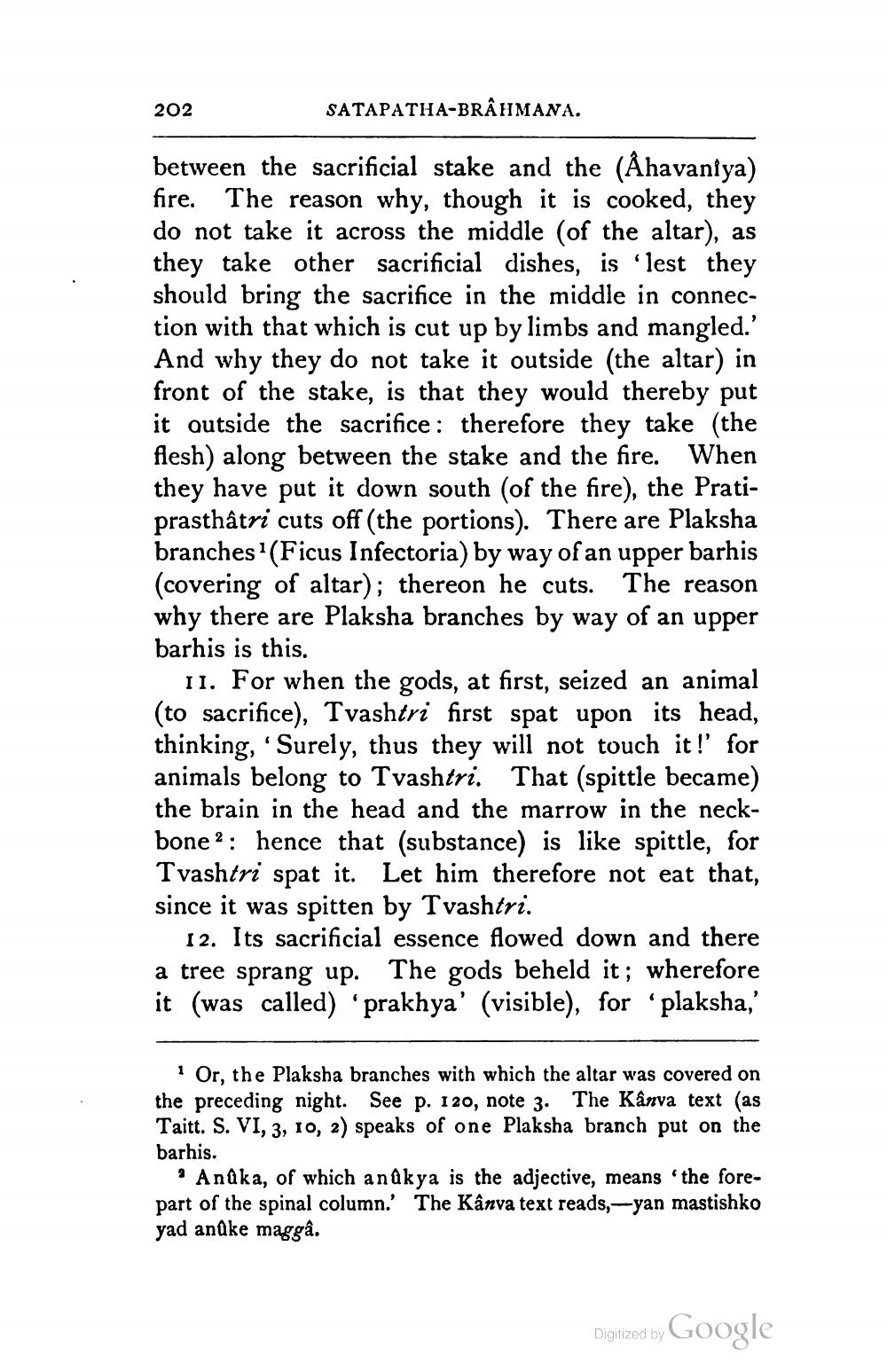________________
202
SATAPATHA-BRAHMANA.
between the sacrificial stake and the (Åhavaniya) fire. The reason why, though it is cooked, they do not take it across the middle (of the altar), as they take other sacrificial dishes, is 'lest they should bring the sacrifice in the middle in connection with that which is cut up by limbs and mangled.' And why they do not take it outside (the altar) in front of the stake, is that they would thereby put it outside the sacrifice: therefore they take (the flesh) along between the stake and the fire. When they have put it down south (of the fire), the Pratiprasthầtri cuts off (the portions). There are Plaksha branches (Ficus Infectoria) by way of an upper barhis (covering of altar); thereon he cuts. The reason why there are Plaksha branches by way of an upper barhis is this.
11. For when the gods, at first, seized an animal (to sacrifice), Tvashtri first spat upon its head, thinking, 'Surely, thus they will not touch it !' for animals belong to Tvashtri. That (spittle became) the brain in the head and the marrow in the neckbone 2: hence that (substance) is like spittle, for Tvashtri spat it. Let him therefore not eat that, since it was spitten by Tvashtri.
12. Its sacrificial essence flowed down and there a tree sprang up. The gods beheld it; wherefore it (was called) 'prakhya' (visible), for 'plaksha,'
I Or, the Plaksha branches with which the altar was covered on the preceding night. See p. 120, note 3. The Kânva text (as Taitt. S. VI, 3, 10, 2) speaks of one Plaksha branch put on the barhis.
' Anûka, of which anakya is the adjective, means 'the forepart of the spinal column. The Kanva text reads,-yan mastishko yad andke maggâ.
Digitized by Google




